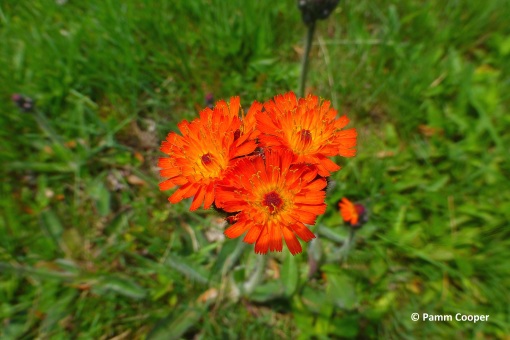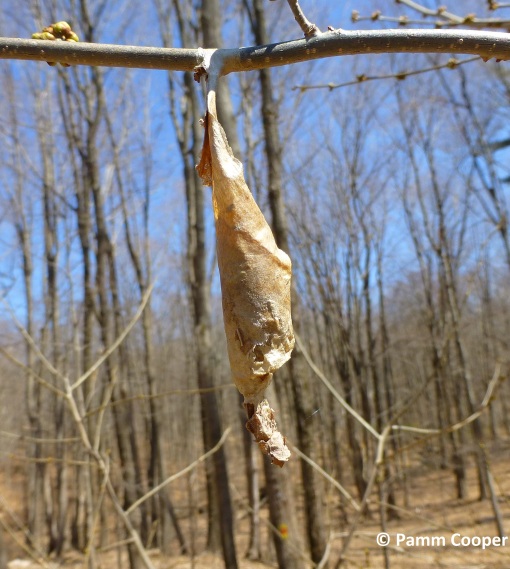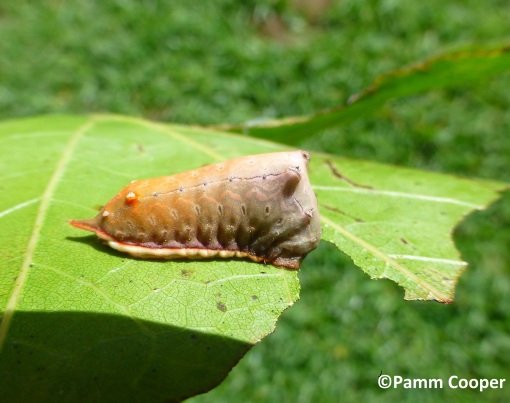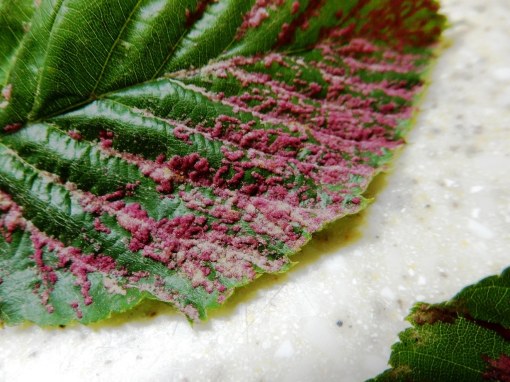Spring being a tough act to follow, God created June.
– Al Bernstein
June is the month where green has become the main the landscape color with flowers and some early fruits sprinkling a bit of color in gardens and wild landscape. It is a cheery time for me as the best is yet to come. Butterflies, bees, dragonflies and other insects are everywhere now and provide a little bit of interest as they go about their daily lives. I stop by the woods early in the morning to listen to wood thrushes, veerys, vireos, grosbeaks, catbirds, tanagers and so many other birds of the forest that sing so sweetly at this time of year.
Wandering in my yard this week I found a little surprise- an enchanting Clytus arietis wasp beetle resting its little self on a fern. This diminutive, long-horned beetle has striking yellow markings on a dark brown to black narrow body and it has cricket-like back legs. Its larvae live in warm, dry, dead wood, favoring birches and willows. Adults can be found during the day from May- August resting in the open on low vegetation.
Maple eyespot galls are brightly colored circles of red and yellow that appear on the surface of red maple leaves in early June. Caused by the ocellate gall midge Acericecis ocellaris, this tiny fly deposits eggs on the underside of red maple leaves, which causes a chemical response in the leaf at each spot an egg was laid. The larva hatches and feeds on leaf tissue within the small disk- shaped gall that was formed.
Ebony jewelwing damselflies Calopteryx maculate are easily identified by their metallic iridescent green/blue color and totally black wings. They can be found near streams and rivers, but are especially common found near shallow streams in forests. This damselfly is unlike other jewelwings because it is the only one that sometimes rambles far from water.
White-tailed deer fawns are generally born from late May to June and can sometimes be seen trying to keep up with their mothers early in the morning. They often get exhausted doing so and collapse to rest, sometimes in unusual places. Fawns are generally left alone during the day and the doe will return at dawn and dusk to feed her fawn and sometimes move it along to a safer place.
Blue-eyed grass and orange hawkweed are blooming in the wild now, as are wild geraniums, beautybush, viburnums, bearded irises, Carolina spicebush, mountain laurels, tulip trees and raspberry. Grape should be flowering soon as will catalpa trees. Catalpa flowers are pollinated by several species of sphinx moths, who visit flowers mostly during the night.
Butterflies and moths are more abundant now as we have warmer weather and plants that have leafed out. Giant silkworm moths like the beautiful luna moth emerge from mid-May through summer. Many are strongly attracted to lights and are often found resting on the sides of buildings where lights are left on all night. These large moths do not feed, but live off of stored food until they mate, perishing soon after. Red spotted purples and tiger swallowtails are just a couple of butterflies that visit my property and lay eggs on some black cherries planted a few years ago.
Walking through a woodland path at a nature preserve I heard a buzzy high-pitched call above me and saw a blue-gray gnatcatcher sitting on her eggs in a nest. The nest was well camouflaged with a coating of lichens so it blended in perfectly with the lichen encrusted branches all around it.
There is so much going on in the outdoors now wherever you happen to go. There are so many flowers yet to bloom, and so many young animals and birds just getting to know the world around them. As I watch bees and butterflies, and listen to the birds sing and the tree frogs trilling away day and night, I think Aldo Leopold got it just right when he wrote “ In June, as many as a dozen species may burst their buds on a single day.”
Pamm Cooper





























































